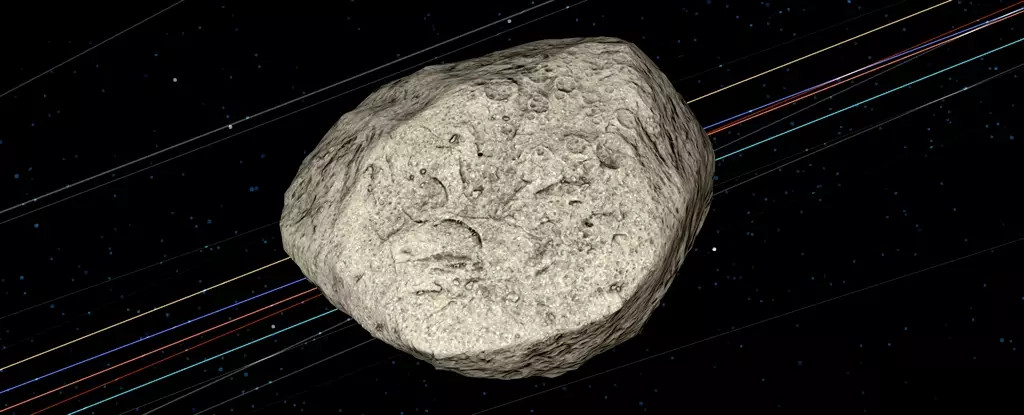As space enthusiasts prepare for the close encounter of asteroid 99942 Apophis with Earth in 2029, it’s essential to explore the implications of this celestial rendezvous beyond mere fear of collision. While scientists assure us that the asteroid poses no direct threat to our planet, the event may significantly influence the asteroid itself, leading to intriguing questions about its characteristics and behavior. The research spearheaded by Ronald Ballouz from the Johns Hopkins University Applied Physics Laboratory reveals potential transformations in Apophis’ surface due to the gravitational interactions during its flyby, shifting our focus from concern over impact to that of cosmic intrigue.
Discovered in 2004, 99942 Apophis is a 335-meter (1,100-foot) chunk of rock that captured the attention of scientists worldwide due to initial calculations suggesting a potential collision course with Earth during its approach in April 2029. This prompted widespread media coverage and, understandably, a fair amount of anxiety. However, as data continued to be refined and analyzed, it became clear that the asteroid would pass within a relatively safe distance—less than 32,000 kilometers (20,000 miles)—making an impact virtually impossible over the next century.
What might be more fascinating than our previous fears is what happens to Apophis as it whizzes past our planet at such close quarters. Rather than being a tormented traveler through the void of space, Apophis reveals itself as a dynamic artifact of cosmic forces, one that may be subject to transformation caused by its near-Earth experience.
The study initiated by Ballouz underscores a paradox present in near-Earth asteroids, like Apophis. These bodies exhibit surface characteristics that deviate from the expected degradation observed in asteroids that remain isolated in more remote orbits. Most asteroids are believed to consist of primitive materials formed billions of years ago. Hence, one would assume they would show significant weathering effects due to ongoing exposure to solar winds, radiation, and micrometeoroid impacts. However, those near-Earth asteroids tend to appear less weathered and notably younger.
This anomaly leads us to ponder whether their encounters with Earth and its gravitational forces contribute to the rejuvenation of their surfaces. By modeling the imminent flyby of Apophis, Ballouz’s team aimed to uncover the correlation between proximity to Earth and the observable changes.
To explore how Apophis might change during its close encounter, the researchers modeled its structure, likely a bi-lobed formation reminiscent of other asteroids like Itokawa. Through simulations, they proposed scenarios illustrating the gravitational influence that the Earth will exert on Apophis. As the asteroid approaches, it is expected to enter a regime where its gravitational pull would cause substantial seismic shaking, altering surface structures.
These short-term seismic events could manifest as detectible patterns, such as shifting boulders on its surface, observable with Earth-based instruments. Such seismic activities could mark the beginning of a newfound story that Apophis carries forth from its close pass by our planet.
Another crucial aspect of the interaction concerns the asteroid’s rotation. The gravitational pull may not only induce immediate changes but could also recalibrate Apophis’ longer-term trajectory and spin state. As it continues its journey through the solar system, we might find evidence of surface alterations occurring over extended periods—a dynamic reflection of its cosmic environment.
The excitement surrounding the 2029 flyby extends beyond the initial astonishment of a flying rock. It presents an exceptional opportunity for astronomers and scientists to observe and study Apophis from a proximity rarely achieved. The potential for observing or measuring changes in spin and surface composition will yield valuable insights into asteroid dynamics as a whole.
As we anticipate the passage of Apophis, could we be witnessing the reawakening of an ancient celestial traveler? Such encounters are not mere spectacles but vital opportunities to expand our understanding of the solar system’s building blocks and the processes that have shaped them through time.
While the fear surrounding the potential for impact from Apophis has undeniably lessened, the asteroid could emerge from its close encounter carrying new tales of transformation—a reminder of the ever-changing nature of our universe and the wonders it holds just beyond our world.

